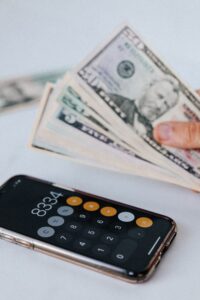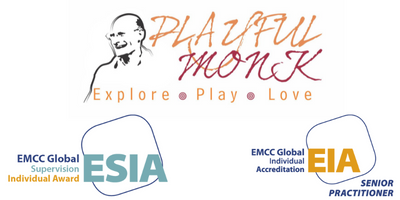If I was a leader in a company right now, concerned about profits, the competition, the workforce, cyber-attacks, shareholders, my fellow board members and my family, I doubt I would pause right now to read this article.
I’d be back to my meetings, zoom calls and the thoughts of what am I/we going to do next. Shouting down the phone Bob “make it work” and to Sheila “now there is no more budget for that.”
 I’d be tired of consultants, coaches, and charlatans selling their snake oil, telling me what to do. I would certainly give a former Buddhist monk a wide-berth because he for sure would not know what it is like to be responsible, he had a life-style focusing on himself — what value could he bring?
I’d be tired of consultants, coaches, and charlatans selling their snake oil, telling me what to do. I would certainly give a former Buddhist monk a wide-berth because he for sure would not know what it is like to be responsible, he had a life-style focusing on himself — what value could he bring?
Here comes Mat with the figures and the science of change and what the HBR review says, and the competition are going Agile, we better go Agile, of course, it is safe.
The question is how do you know
that the decisions you are making
are going to cause you less suffering?

If you got this far, I got your attention and your attention is worth more than bitcoin or gold.
Where you place your attention is what you see, isn’t it?
Kind of obvious isn’t it?
I started a leadership coaching journey with a C-suite executive on the edge of burnout, with a business that had explosive growth. Our first introduction was organized by his personal assistant in a car on his mobile between meetings, where most of the time we could not hear each other.
Our sessions started in his busy workplace with an interruption “hello Sarah yes I can sign that” and me being looked at as if I was another worker, client or something else. I smiled as only a former Buddhist monk can. I spent a lot of my time as a monk just observing my judgements, my bodily sensations and not reacting. Why you may ask?
So I can notice what is happening, rather than what I think is happening or should be happening and from this place make an effective choice.
The response was to speak with my client about the interruptions in our sessions and we agreed we would walk and talk, which provided exercise, was less distracting than being at the office and would help our session stay focused on the present moment.
We left his office with people asking for this and that, and as we walked away from the building he nodded to several people during our coaching conversation, a hello to somebody else and I was curious about this. I asked “why are you doing that” and he replied, “I do not know.” How curious I thought “why are you doing something you don’t know why you are doing it?”
I got this strong feeling now I’m supposed to insert some colourful diagram with stats from my long research with my clients, combined with the latest research on leadership.
The thing is even the researchers on leadership criticise this: Alvesson describes this as “people are unfortunately suffering from a misidentification of themselves as being in the beauty industry.”
Whilst I am informed by research and assortment of beautiful models they tell me very little of what is going on now. What is right in front of me?
Why do I want to know that?
As a monk I did simple walking mindfulness practise, just noticing one step at a time. My body quieted down and I’d notice my mind and that memories are not real, and the future thinking was never certain. Where I found certainty was in this moment as it is: one foot after the next. I learned to reflect on my current experience to trust in emergence including what to say and how to act, not from a place of habitual reaction but from radical aliveness: to welcome life as it is.
As I found out leading large residential retreats: welcoming life allows you to create your own leadership approach, whilst understanding and integrating other models into your own and that I noticed it had an impact for me and for the people around me.
I’d like to invite you to join me to develop as a leader, based on where you are now.
“What do you mean Bob, the sales staff want a new function in the software and developers say they are three months behind, I thought the innovation department got a new building, a new manager and the woman with Phd. Tell the marketing people to redesign the advert — NOW!”
“WHY can’t these people speak to one another Bob. Tell me why?”
Bob looks down at the ground and mumbles about “a leader can only share so much of their attention”. Maybe he thinks “it is not about the leader it is about everybody being able to lead”. He looks up and out the window in the office and a thought strikes him “how complex nature is and there does not seem to be anybody leading that”.
Bob is pulled away from his thought with the leader shouting “did you read the one-star review from one of our customers? It said they don’t listen at all, all I wanted to do was…” The leader turns away to look at the financial report on his laptop, a smile appears on his face, the money is still coming in.
Life is complex, isn’t it?
What I learned as a Buddhist monk was to stay calm and connected in complex situations. This is what I offer to my clients without having to go to the monastery or chant funny words or look at the fluff in your navel. If you would like to seriously develop your leadership so that you can empower others to do the same, enhance your companies responsiveness, purpose and bring value to the customer, release the full potential of your employees and to support our planet, then there has never been a better time than now to start the journey.
And now for the guarantee that my bottle of snake oil in its beautiful glass bottle is a 100% empty. As a Buddhist monk I was trained to respond from emptiness or non-judgement — what else would you expect!
Images from
Photo by Karolina Grabowska from Pexels
Photo by Anna Shvets from Pexels

